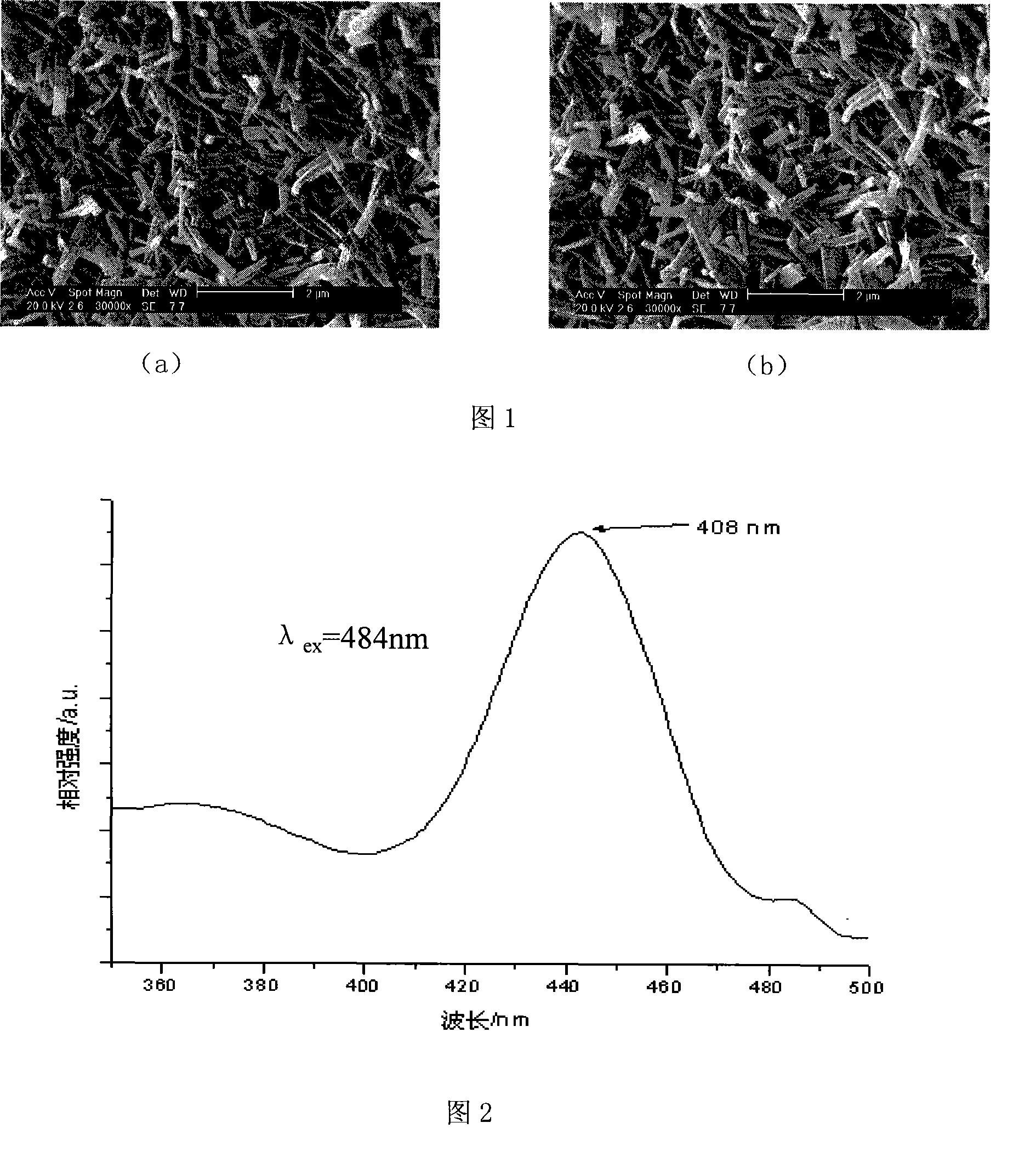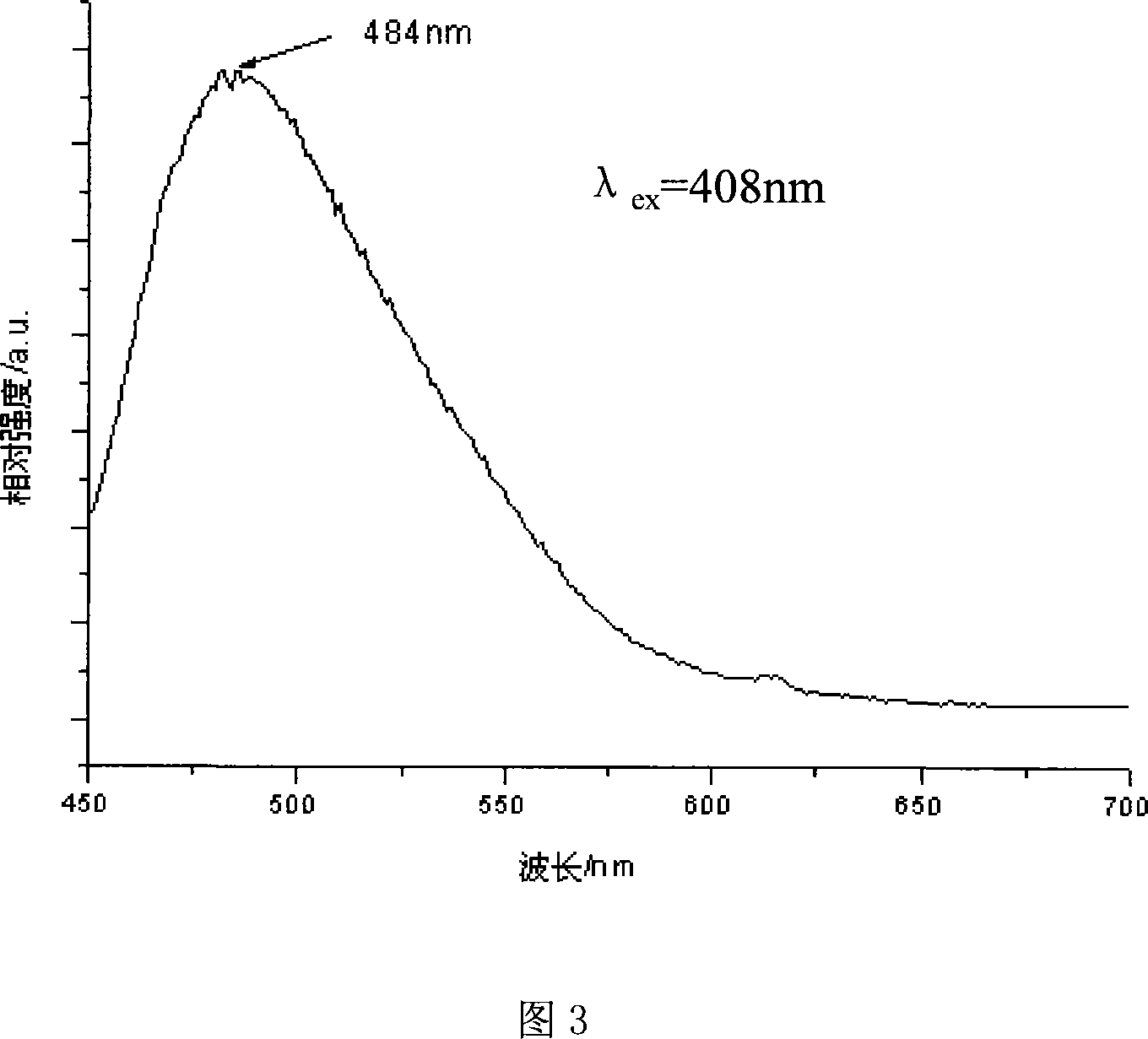Method for preparing blue luminous inorganic-organic composite silicon based materials
A technology of inorganic composite and silicon-based materials, which is applied in the direction of luminescent materials, chemical instruments and methods, etc., can solve the problems of insufficient mechanical properties and stability, low luminous efficiency, and unstable luminescence of small molecule luminescent materials, and achieve microscopic shape. The effect of regular appearance, strong operability and quality flexibility
- Summary
- Abstract
- Description
- Claims
- Application Information
AI Technical Summary
Problems solved by technology
Method used
Image
Examples
Embodiment 1
[0031] Dissolve 2.25g of salicylaldehyde phenylethylamine in 20ml of anhydrous pyridine, add it into a three-necked flask and heat to reflux. A solution of 2.47 g of triethoxysilylisocyanate in 20 ml of pyridine was then added dropwise. After the dropwise addition, the whole solution was refluxed for 8h under the protection of nitrogen, cooled, and the solvent was distilled off under reduced pressure. The resultant was washed three times with 20 ml of cyclohexane to obtain a pale yellow oily liquid. The resulting oily silicone precursor was dissolved in DMF, and then tetraethylorthosilicate and deionized water were added. The material ratio of the organosilicon precursor, tetraethyl orthosilicate and deionized water is 1:2:4. The whole solution was stirred at room temperature until a solid gel formed. The obtained solid gel was transferred to an oven for aging treatment, the temperature was controlled at 80° C., and the aging time was 10 days. Finally, the obtained hybrid ...
Embodiment 2
[0033] Dissolve 2.25g of salicylaldehyde-p-toluidine in 20ml of anhydrous pyridine, add to a three-necked flask and heat to reflux. A solution of 2.47 g of triethoxysilylisocyanate in 20 ml of pyridine was then added dropwise. After the dropwise addition, the whole solution was refluxed for 8h under the protection of nitrogen, cooled, and the solvent was distilled off under reduced pressure. The resultant was washed three times with 20 ml of cyclohexane to obtain a pale yellow oily liquid. The resulting oily silicone precursor was dissolved in DMF, and then tetraethylorthosilicate and deionized water were added. The material ratio of the organosilicon precursor, tetraethyl orthosilicate and deionized water is 1:2:4. The whole solution was stirred at room temperature until a solid gel formed. The obtained solid gel was transferred to an oven for aging treatment, the temperature was controlled at 60° C., and the aging time was 15 days. Finally, the obtained hybrid material w...
Embodiment 3
[0035]Dissolve 2.68g of salicylaldehyde ethylenediamine in 20ml of anhydrous pyridine, add to a three-necked flask and heat to reflux. A solution of 4.94 g of triethoxysilylisocyanate dissolved in 20 ml of pyridine was then added dropwise. After the dropwise addition, the whole solution was refluxed for 7 hours under the protection of nitrogen, cooled, and the solvent was distilled off under reduced pressure. The resultant was washed three times with 20 ml of cyclohexane to obtain a pale yellow oily liquid. The resulting oily silicone precursor was dissolved in DMF, and then tetraethylorthosilicate and deionized water were added. The material ratio of the organosilicon precursor, tetraethyl orthosilicate and deionized water is 1:4:8. The whole solution was stirred at room temperature until a solid gel formed. The obtained solid gel was transferred to an oven for aging treatment, the temperature was controlled at 70° C., and the aging time was 20 days. Finally, the obtained...
PUM
| Property | Measurement | Unit |
|---|---|---|
| length | aaaaa | aaaaa |
| width | aaaaa | aaaaa |
Abstract
Description
Claims
Application Information
 Login to View More
Login to View More - R&D Engineer
- R&D Manager
- IP Professional
- Industry Leading Data Capabilities
- Powerful AI technology
- Patent DNA Extraction
Browse by: Latest US Patents, China's latest patents, Technical Efficacy Thesaurus, Application Domain, Technology Topic, Popular Technical Reports.
© 2024 PatSnap. All rights reserved.Legal|Privacy policy|Modern Slavery Act Transparency Statement|Sitemap|About US| Contact US: help@patsnap.com









